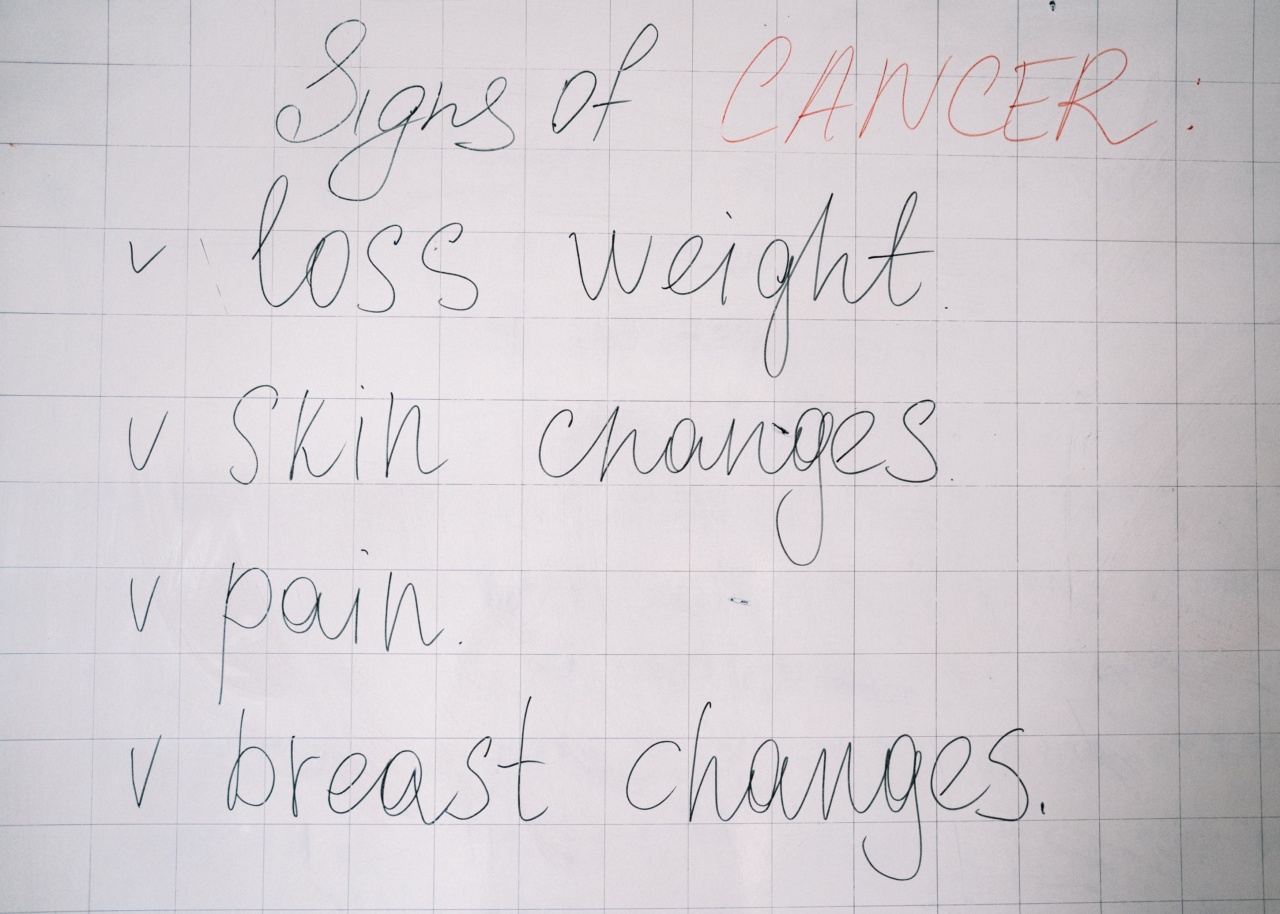Prostate cancer is a serious health condition that affects men worldwide. It is the second most common cancer among men, after skin cancer. While prostate cancer is more common in older men, it can occur at any age.
Early detection and treatment are crucial for improving outcomes and survival rates. Recognizing the early symptoms of prostate cancer can help in its timely diagnosis and treatment. In this article, we will explore the six early symptoms of prostate cancer that every man should be aware of.
1. Frequent Urination
One of the early signs of prostate cancer is an increased frequency of urination. Men with prostate cancer may feel the urge to urinate more frequently, especially during the night.
This symptom is often accompanied by a sense of urgency and can lead to disrupted sleep patterns. While frequent urination can also be a sign of other less serious conditions, such as an enlarged prostate or a urinary tract infection, it is essential to consult a healthcare professional for proper diagnosis.
2. Difficulty in Urinating
Difficulty in starting or maintaining a steady urine flow can be another early symptom of prostate cancer. Men may experience weak or interrupted urine flow, straining while urinating, or a feeling of incomplete emptying of the bladder.
This symptom occurs due to the enlargement of the prostate gland, which can obstruct the urethra and interfere with normal urine flow. Consulting a healthcare provider is crucial to determine the underlying cause and appropriate treatment.
3. Blood in Urine or Semen
Finding blood in urine or semen can be alarming and may indicate various health conditions, including prostate cancer.
Hematuria (blood in urine) or hematospermia (blood in semen) can occur due to the presence of cancerous cells or inflammation in the prostate gland. Although these symptoms can also be caused by other benign conditions, it is essential to undergo a complete medical evaluation to rule out or confirm prostate cancer.
4. Pain or Discomfort During Ejaculation
Prostate cancer can cause pain or discomfort during ejaculation. Men may experience a dull, persistent ache in the lower back, pelvis, or hips during or after ejaculation.
This symptom is often accompanied by changes in sexual function, such as erectile dysfunction or decreased libido. It is important to note that these symptoms can also be caused by non-cancerous conditions, but a thorough medical examination is crucial to determine the exact cause.
5. Pain or Discomfort in the Pelvic Area
Unexplained pain or discomfort in the pelvic area can be a potential early symptom of prostate cancer. Men may experience persistent pain in the hip, pelvis, or lower back region, which can worsen over time.
This pain may be mild initially but can become more intense or persistent as the cancer progresses. Consulting a healthcare professional is essential to evaluate the cause of pelvic pain and provide appropriate medical guidance.
6. Erectile Dysfunction
Erectile dysfunction, the inability to achieve or maintain an erection for satisfactory sexual intercourse, can be linked to prostate cancer.
Prostate cancer can affect the nerves and blood vessels involved in the erectile process, leading to difficulties in achieving or sustaining an erection. While erectile dysfunction can be caused by various factors, including psychological ones, it is advisable to undergo a medical examination to rule out any underlying health conditions.
It is important to note that experiencing one or more of these symptoms does not necessarily mean that a person has prostate cancer. These symptoms can also be caused by non-cancerous conditions, such as an enlarged prostate or urinary tract infections.
However, it is crucial not to ignore these symptoms and promptly seek medical attention for proper diagnosis and appropriate treatment.
Conclusion
Prostate cancer is a prevalent condition that can significantly impact men’s health and well-being. Recognizing the early symptoms is essential for early diagnosis and effective treatment.
If you experience any of the aforementioned symptoms, it is important to consult a healthcare professional who can evaluate your condition and provide appropriate guidance. Remember, early detection can greatly increase the chances of successful treatment and improved outcomes.































